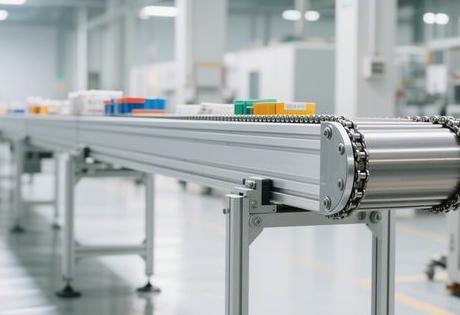In the industrial production line, belt deflection is a "stubborn problem" that plagues countless operators. It is not onlyLeads to spills and increased cleaning costs for 30%And even more.Leads to chain failures such as damaged roller bearings, torn belts, etc.The belt may even interrupt the whole production line due to the trigger of the emergency stop device. Today I will combine ten years of field experience, with the most straightforward language to dismantle the belt deflection of the root solution.

Step 1: Diagnose the direction of the run-off and the core triggers
When the belt continues to favour one side during operation, first carry out the "three observations":
- Empty vs. heavy load: Idling fine but runaway when loaded? Usually due to material bias
- Offset zone positioning: Problems with drums, rollers or drop points only at the head/centre/tail of the machine respectively
- Edge wear marks: Heavy wear on one side of the belt tends to point to a tilted frame or an unlevelled pulley.
I once encountered a cement plant that replaced the belt three times in three months because it overlooked a 5mm difference in rack height - precise positioning is the only way to avoid ineffective repairs.

Step 2: Dynamic deflection correction method of the roller group (to solve the deflection in the middle of 70%)
Operation mnemonic: run left before pushing right, run right after moving left
- Locate the runout section carrier roller set and loosen the mounting bolts with a spanner.
- If the belt is moving towardsleft sideRunning off: willright sideMove the rollers forward in the running direction by 1-2cm (orleft side(Roller setback)
- The use of laser level meter calibration, to ensure that the perpendicularity error between the roller group and the centre line of the frame ≤ 0.5 °.
Note: After each adjustment, it is necessary to run 3 turns without load to observe the effect, to avoid over-correction triggering serpentine oscillation.
Step 3: Precise calibration of drum axis (cure stubborn runout)
This is the most overlooked and critical step:
- Drive roller calibration: If the belt deflects to the right, thenRight bearing seat forward(e.g. 5 mm movement), simultaneous checking of drum levelling
- Reversing roller linkage: Tail drum reorientation with headin contrast(Left bearing seat moves forward when right-handed)
- Synchronisation of tensioning devices: When tensioning the hydraulic cylinder, it must be ensured that both sides of the bearing seatisometric translation
Case of a coking plant: the runout rate decreased by 90% after calibrating the roller, and the life of the roller was extended by 8 months.
Step 4: Optimisation of impact prevention at the drop point (preventive control)
When the material impact causes the belt to sway and run off:
- Add adjustable baffle plate: Centring the drop point to ensure that the material is stacked on the belt centreline
- Adjusting the width of the guide chute: PressBelt width 2/3of the golden ratio modification (e.g. 1000mm belt with 660mm trough)
- Adding buffer rollers: Installation of 3 sets of buffer rollers under the transfer point to absorb the impact.
Step 5: Intelligent anti-bias system configuration (long-lasting guarantee)
For critical conveyor lines, upgrades are recommended:
- Differential centring roller sets: 1 set per 6-10 groups, automatic offsetting of lateral deflections
- Passive hydraulic guiding machine: Real-time belt position sensing and feedback adjustment (suitable for bi-directional operation equipment)
- Laser alignment monitor: Setting ±20mm offset threshold, automatic alarm for exceeding the limit
Ultimate proposal: quarterly preventive calibration in the order of "roller level → roller vertical → tensioning synchronisation", saving 60% downtime cost than repairing. When you see the belt like a sword straight ahead, you gain not only stable production, but also the ultimate interpretation of industrial aesthetics - precision, has always been the dignity of the technician.













